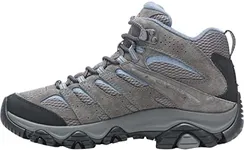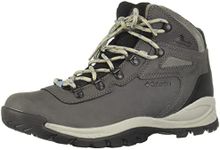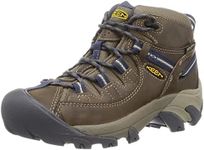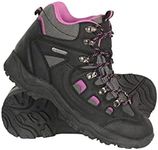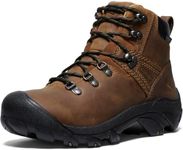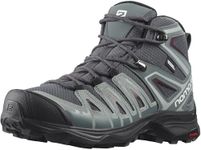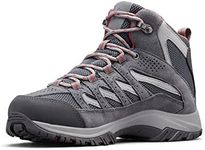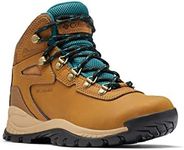Buying Guide for the Best Hiking Boots For Women
Choosing the right hiking boots is essential for comfort, safety, and enjoyment on the trail. The best hiking boots for women should fit well, provide the right support, and match the type of hiking you plan to do. Before buying, think about the terrain you'll be hiking on, the weather conditions, and how much weight you'll be carrying. Trying on boots with the socks you plan to wear and walking around in them can help you find the best fit. Remember, the right boots can make a big difference in your hiking experience.Fit and SizingFit and sizing refer to how well the boots match the shape and size of your feet. This is crucial because poorly fitting boots can cause blisters, discomfort, or even injuries. Hiking boots come in different widths and shapes, so it's important to try them on and ensure there's enough room in the toe box, a snug fit around the heel, and no pinching anywhere. If you have wide or narrow feet, look for boots that cater to your foot shape. Always try boots on with the socks you plan to wear hiking, and consider that your feet may swell during long hikes.
Support and StabilitySupport and stability are about how well the boots protect your ankles and keep your feet steady on uneven ground. Boots with higher ankle collars offer more support, which is helpful for rough or rocky trails, or if you carry a heavy backpack. Lower-cut boots are lighter and more flexible, suitable for easier trails or day hikes. Think about the type of hiking you do most often: if you hike on challenging terrain or carry heavy loads, choose boots with more support; for lighter, shorter hikes, less support may be more comfortable.
Waterproofing and BreathabilityWaterproofing keeps your feet dry in wet conditions, while breathability allows sweat and moisture to escape, keeping your feet comfortable. Some boots use waterproof membranes, which are great for rainy or muddy hikes, but can be less breathable. Non-waterproof boots are usually more breathable and better for dry, hot climates. If you often hike in wet or unpredictable weather, waterproof boots are a good choice. If you mostly hike in dry, warm areas, prioritize breathability to avoid sweaty feet.
WeightThe weight of hiking boots affects how easy they are to walk in over long distances. Heavier boots usually offer more protection and support, which is useful for tough terrain or carrying heavy packs. Lighter boots are less tiring and more comfortable for fast-paced or shorter hikes. Consider the type of hiking you do: for multi-day trips or rough trails, heavier boots may be worth the extra weight; for day hikes or well-maintained paths, lighter boots can help you move more easily.
Traction and OutsoleTraction refers to how well the boots grip the ground, which is determined by the design and material of the outsole (the bottom part of the boot). Deep, aggressive lugs provide better grip on muddy or loose surfaces, while flatter soles are better for smooth trails. If you hike on slippery, rocky, or uneven terrain, look for boots with strong traction. For mostly flat, dry trails, less aggressive soles may be sufficient and more comfortable.
Material and DurabilityThe materials used in hiking boots affect their durability, weight, and comfort. Leather boots are usually more durable and supportive, but can be heavier and take longer to break in. Synthetic materials are lighter and often more breathable, but may not last as long. If you need boots for frequent, tough hikes, durable materials like leather are a good choice. For occasional or casual hikes, lighter synthetic boots may be more comfortable and easier to wear.

